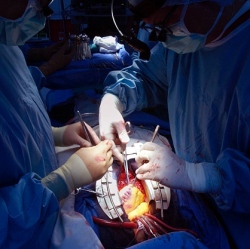
Scientists have grown miniature human stomachs from stem cells as a way of studying gastric diseases such as ulcers and stomach cancer and in the future creating tissue to repair patients’ stomachs. The mini-stomachs are grown in petri dishes from stem cells. Fully formed, they are the size of a pea and shaped like a rugby ball.
They are hollow with an interior lining that is folded into glands and pits like a real stomach. Crucially, the researchers found that the miniature stomachs, known as gastric organoids, respond to infection very much like ordinary human stomachs. “There hasn’t been any good way to study human stomach disease before because animals just don’t get the same diseases,” said James Wells, director of the Pluripotent Stem Cell Facility, Cincinnati Children’s Hospital Medical Center, who led the research which is published in Nature.
Human gastric diseases are associated with chronic infection by the bacterium Helicobacter pylori. Half the world’s population is infected with the bug, which can be picked up from food. Although most people do not show symptoms, once the infection is present up to 20% of carriers will develop gastric ulcers during their lifetimes. Around 2% will develop stomach cancer.
In developing countries, where H. pylori infection is more prevalent, gastric cancers are the second leading cause of cancer-related deaths. Having grown the mini-stomachs, the researchers then injected them with H. pylori. In animals, H. pylori has little effect and disease does not follow but in the gastric organoid, the invading bacteria behaved as if it were a real human stomach.
